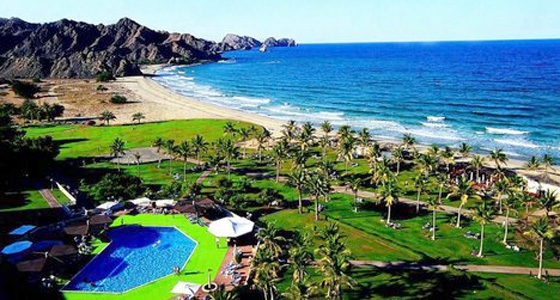An extensive study to develop a long-term strategy for tourism is underway in Oman after the minister responsible for the sector acknowledged that although solid progress had been made in recent years, the industry has not yet reached its full potential.
Addressing a session of the Omani Shura Council in late December, Tourism Minister Ahmed Bin Nasser Al Mehrzi said his ministry was laying the groundwork for a comprehensive, long-term strategy, and would soon contract an international agency to perform a detailed assessment of the current state of the sector. The study is expected to entail a review of all facilities, supporting services and the potential of proposed projects, he said.
Explaining the need for the review, the minister said, “There was no clear vision for the sector, so the government began evaluating it to find out why it did not reach its set goals and decided to create a long-term strategy for the next 30 years.”
This assessment and planning process, which Al Mehrzi said would take up to three years, is expected to focus on both domestic and international tourism. Combined with a lack of a blueprint for the future, Al Mehrzi said weaknesses in basic infrastructure and services were also holding back tourism in Oman, and that these issues would be addressed in both short-term developments and through the longer-term strategy.
However, despite the state having invested some OR100m ($259.7m) in the sector over the past few years, Al Mehrzi said returns from these investments had not lived up to expectations to date. The minister added that revenue from domestic tourism reached OR800m ($2bn) since the current five-year plan, from 2011 to 2015, was enacted. International tourism, by contrast, brought in OR140m ($363.6m) in the same period.
While it has yet to roll out its new long-term vision, the ministry has already set a number of ambitious medium-term goals for the sector, including increasing the Sultanate’s hotel room stock from around 12,000 to 20,000 by 2015 and increasing arrival numbers from the present level of around 1.5m to 12m by 2020.
Progress in recent years has been good. Indeed, in 2012, tourism saw positive indicators across the board. The tourism sector represented 3% of GDP last year, or OR768.9m ($2bn), according to the London-based World Travel & Tourism Council (WTTC). That was up by 5.8% on 2011, outpacing the 3.1% average growth in the Middle East region.
However, the WTTC is somewhat less optimistic about Oman’s medium-term prospects. The council has forecast that Oman will host some 2.83m inbound tourists in 2022, and while this is well up on the 1.6m it estimated for 2012, it does suggest the government may fall well short of its 12m target for 2020.
The state is investing heavily in supporting infrastructure, increasing capacity at most of the main airports and building subsidiary aviation hubs in regions not regularly served by passenger flights. These projects, some of which are already in progress and others set to begin over the coming years, will provide a boost to the Omani construction sector, as well as the accelerated program of hotel building aimed at increasing room numbers.
Though the state is supporting hotel development, private investment – both local and foreign – is needed to boost room stocks and tourism facilities to the level expected by the government. In this, Oman is in competition with other countries in the region. While the WTTC report said there had been a total of $1bn of investments in the travel and tourism sector in 2011, this amount was low when compared to the $20.8bn that flowed into the UAE, or the $5.3bn invested in Saudi Arabia.
Currently, revenue from the tourism industry is weighted towards the domestic segment, with both earnings and visitor numbers strongly favoring local, rather than foreign, visitors.
Oxford Business Group
13 February























































